The names of Alberto Contador and Ivan Basso will be very familiar to anyone who has followed professional bike racing for a while. With nine Grand Tour Victories between them, albeit weighted 7:2 in Contador’s favour, they are two of the biggest names in the sport’s recent history.
What is probably much less well known is that together they own a bike brand: Aurum. Founded in 2020 and based in Spain, Aurum offers a very concise range, with just two road bikes and a gravel bike. Unsurprisingly, the models are unashamedly performance-biased with prices that perhaps slightly undercut the big brands. The model on test here is the second generation of its Magma road bike, the more race-focused of the two tarmac options.
The Magma is Aurum’s pro race bike
(Image credit: Andy Jones)
Aurum sponsors the ProTeam Politi Visit Malta, and you may have spotted their black and red bikes in this year’s Giro d’Italia, where their riders were visible in many of the breaks. As well as having Contador and Basso helping to develop the bikes, this means that there is also a raft of rapid pro racers who can add their input as well, so speed is unlikely to be in short supply for the Magma.
Construction
Whilst Aurum’s website offers the bikes as frameset only, as a complete bike or with customised spec, here in the UK, the bikes are frameset or customised only. This means that the precise specification of the test bike is relatively unimportant, as it can all be chosen by any prospective purchaser. I think that this is a very important feature when so many of the bigger manufacturers are offering fixed stem lengths, bar widths, crank lengths, etc. Much like the Handsling A1R0evoS, it allows a much better fit right from the start without having to make expensive changes after purchase.
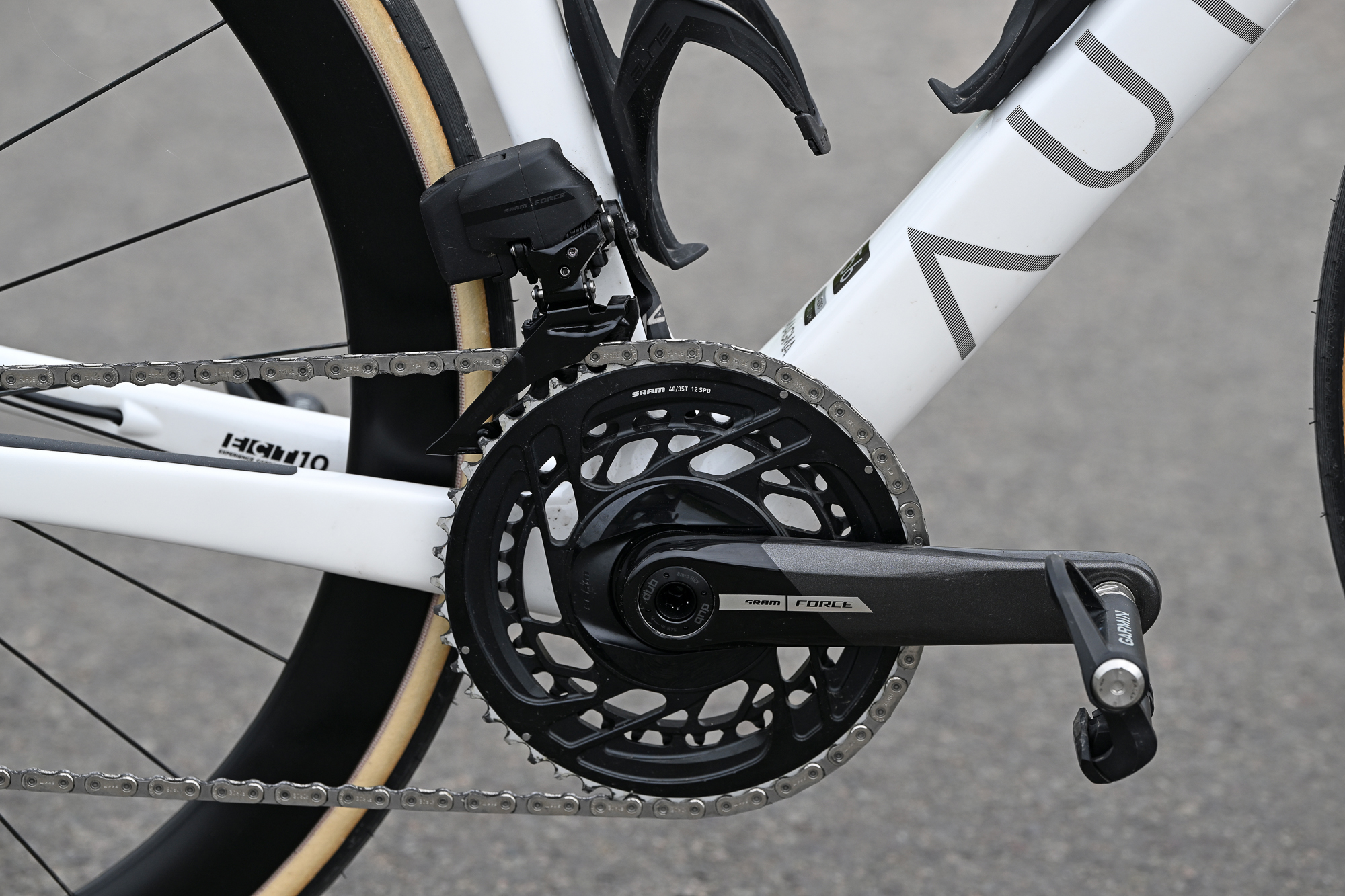
It’s great to be able to choose crank length, stem length and bar width
(Image credit: Andy Jones)
Of course, the frame is the most important part of any bike, and is the element of the Magma in which the influence of Contador, Basso and the other pro riders should be most tangible.
The silhouette of the carbon frame is an immediate reminder of its owners’ roots; no dropped seatstays here, just a classic and classy double-diamond design reminiscent of the bikes Contador and Basso made their names on. Aero features are present, but in a subtle way. Few of the tubes are round, but none are overtly deep or flattened either, suggesting a careful balance between cheating the wind without upsetting the scales. Indeed, the claimed weight for an unpainted 54cm frame is 780g, which is very acceptable.
Aurum calls their carbon ECT – Experience Carbon Technology, with the Aurum made from ECT10, their highest grade.
Despite the traditional looks, there is space for a thoroughly modern 35mm set of road tyres in the frame and a UDH hanger too, so spares should be easy to source. Furthermore, the bottom bracket is a T47 unit, so no need to reach for the big hammer when it’s time for a new one. These touches point to a well-thought-out design process rather than one which simply chased grams or watts.
I do have to confess that the bottle cage bolts confused me for a while as I wondered why my trusty hex keys were failing me. Eventually, I worked out that the Aurum-branded bolts (yes, really) were actually a Torx fit.
At first glance, the geometry numbers look as you’d expect: well towards the modern race bike end of the spectrum with the size 56 having a 994mm wheelbase, 410mm seatstays and a 73.5° head tube angle. However, in the flesh, the 166mm head tube is not as low as it should be, as the top headset cover is very tall and effectively increases the head tube to nearly 190mm, which also increases the real-world stack figure. Some of the images of the Magma on Aurum’s website seem to show a much shorter headset cover, though, so this should be a simple fix if required.
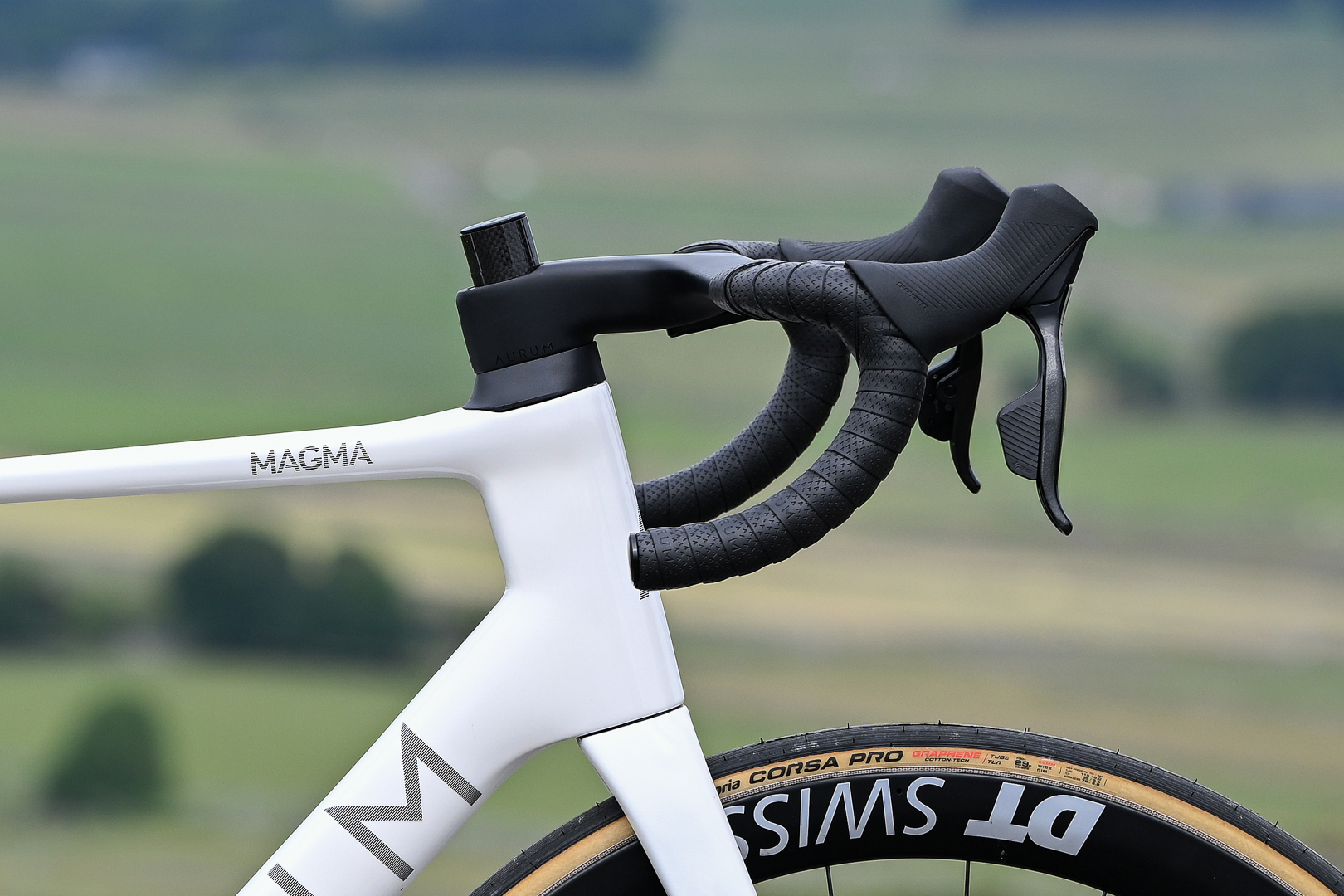
Headset top cover adds significant height to the head tube
(Image credit: Andy Jones)
Available colour schemes are nice and simple: Team Red, Carbon Gloss and Arctic White. If the test bike is anything to go by, then their paint finishes are a thing of beauty with a high-quality look and feel.
Should you wish, your Magam frameset can be supplied with Aurum’s own one-piece carbon bar and stem, which apparently saves 10 watts over the previous version and comes neatly etched with Magma’s capital ‘A’ design for texture on the tops. The Aurum bar tape also features this logo. The D-shaped carbon seat post is available in 0mm or 21mm offset versions.
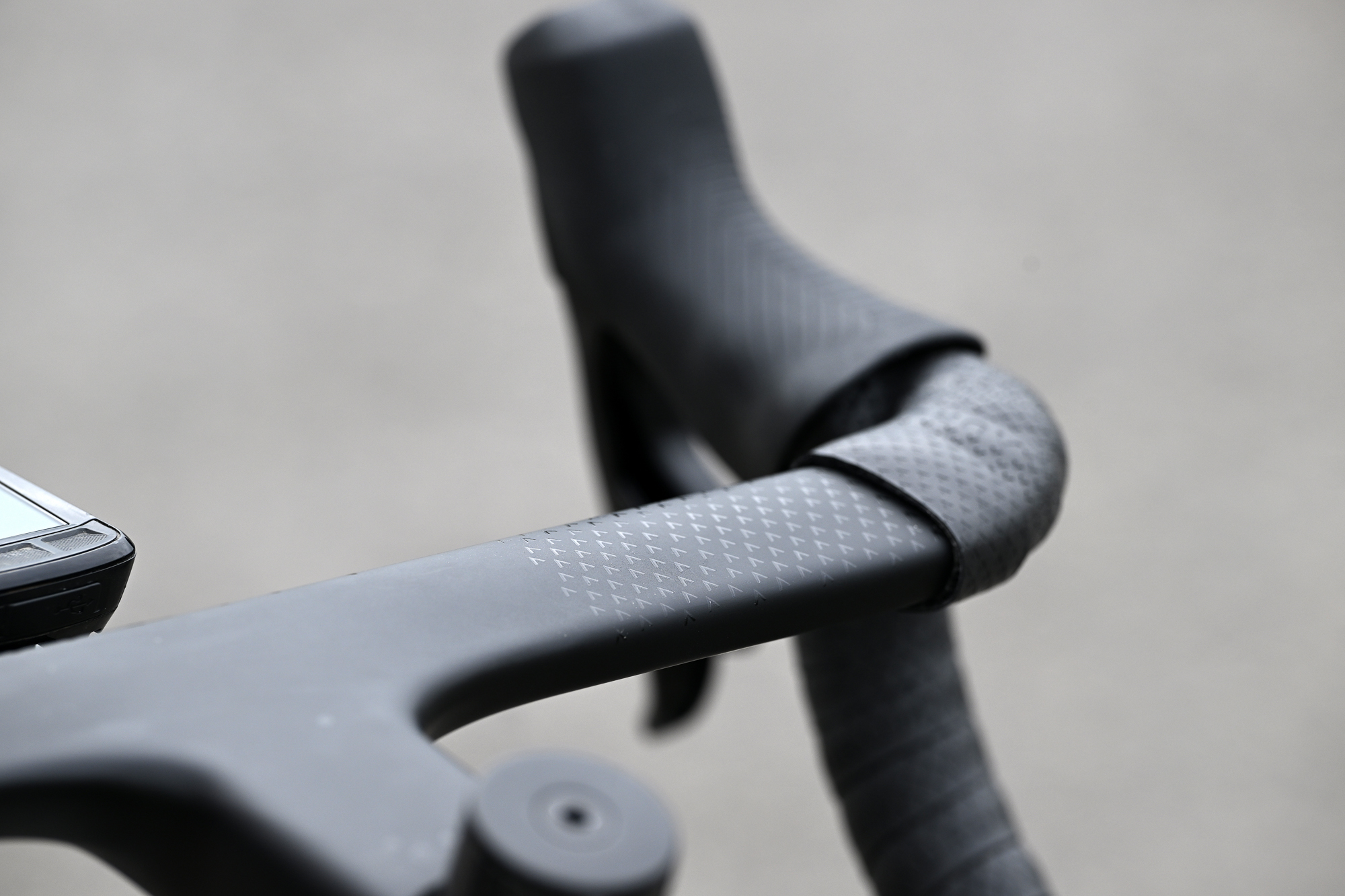
Both the bars and the bar tape feature Aurum’s ‘A’ logo
(Image credit: Andy Jones)
I won’t spend too long on the rest of the componentry as it is all customisable, but SRAM’s Force AXS groupset is always a joy to ride and I’ve long been a fan of the simple shifting mechanism, even if the hoods are a bit on the bulky side.
Slightly more idiosyncratic were the wheels. DT Swiss’ 45mm deep ERC 1400s are a fine wheelset, but they are from the Endurance range when perhaps wheels from the Aero range might have been a better fit. That said, the ERCs are wider internally than the ARCs and only weigh just over 1,500g, so no real issue here.
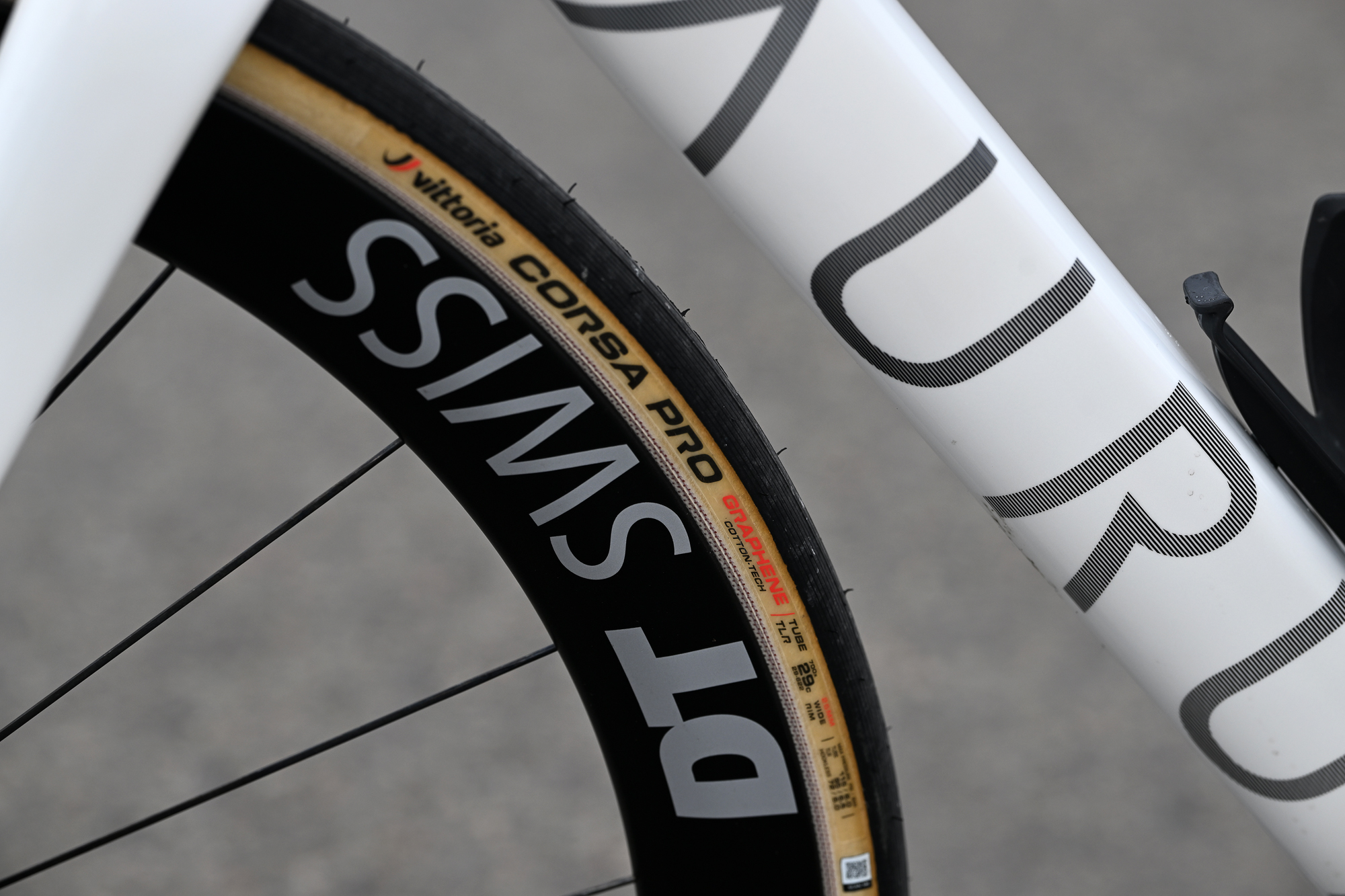
Spec includes DT Swiss ERC 1400 wheels and Vittoria Corsa Pro 29 WR tyres
(Image credit: Andy Jones)
The test bike also featured Vittoria’s curious new Corsa Pro WR 29mm, which slots in between the 28mm and 30mm, but has been designed specifically for modern rims with an internal width of 25mm. The DT Swiss ERC 1400s have an internal width of only 22mm, though, so the Vittorias came up a little bit short of their billed width at 27.5mm. The wheels and tyres were tubeless-ready, but were fitted with standard inner tubes for the test period.
For the record, the saddle was a 3D-printed Fizik Antares model.
All-in-all, the combination of glossy white paint, classic tube shapes and tan wall tyres gave the Magma an elegant, timeless look.
Weight without pedals or bottle cages on my scales was 7.58kg, which is about par for this spec level. The main area I’d be targeting for weight loss would be some alternative wheels and tubeless setup tyres, which could easily drop 300g. The switch to SRAM RED or Shimano Dura-Ace would lose another 300g, but at considerable expense.
The ride
Again, as components, bar width and stem length are all configurable, I’ll just run through them briefly.
My first experience of a 3D printed saddle was a pleasant one – I thought I’d give it one ride to try it before switching to my preferred perch, but in fact I ended up leaving it on for the duration with no issues at all on rides up to 100km.
The 100mm stem on the 56cm bike was a little short and the front end a smidge high for my ideal setup, but no real dramas here either. The bar shape was good with a nice, natural-feeling curve both in the drops and at the transition to the hoods. The Aurum branding on the front of the bar and the computer mount was a nice touch.
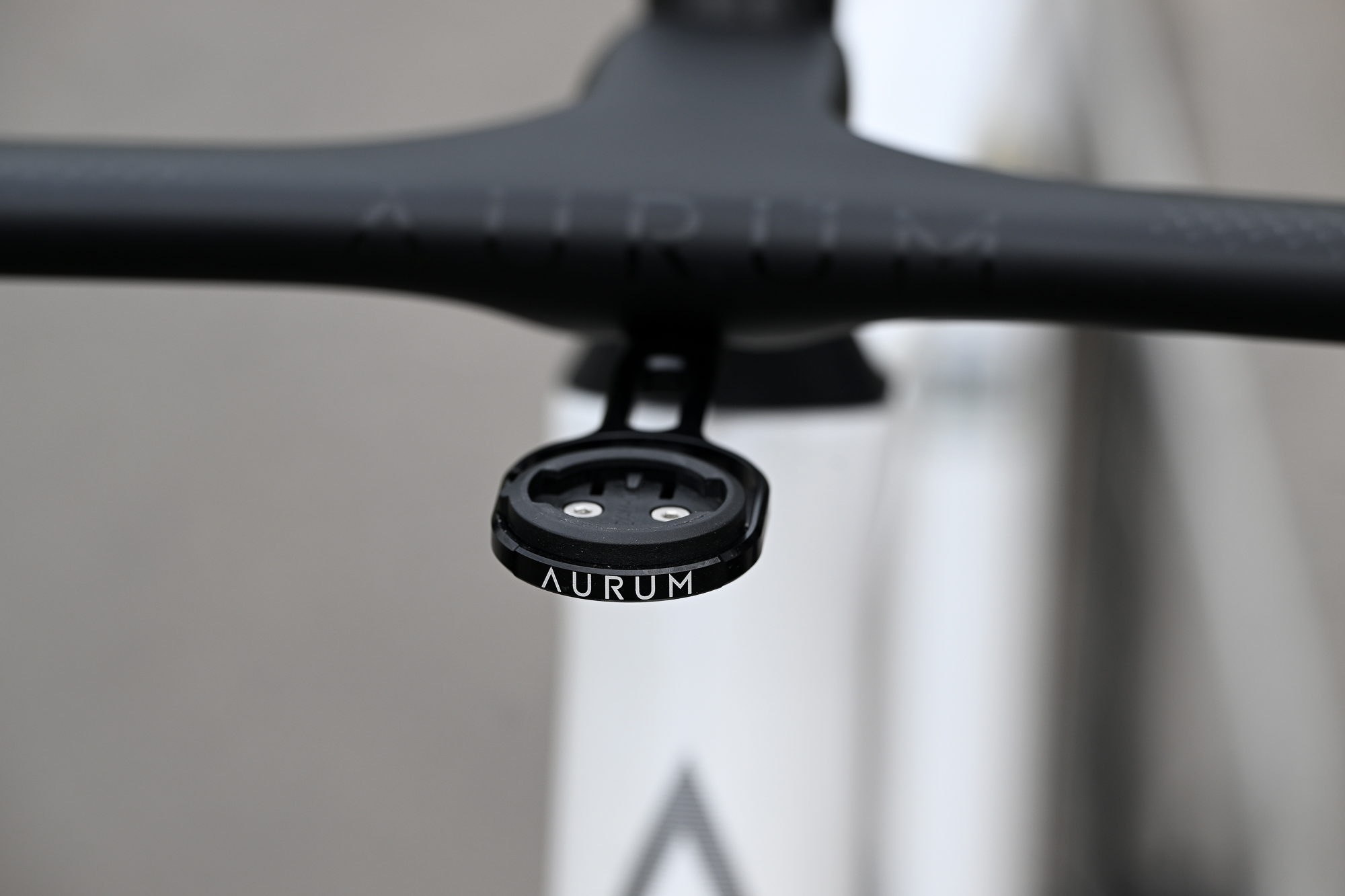
Even the out-front computer mount is branded
(Image credit: Andy Jones)
Out on the road, the Magma’s stiffness was immediately obvious. Perhaps it should not have come as a surprise that a bike designed by Alberto Contador, a guy whose saddle had the easiest job in the peloton, was very stiff.
This manifested itself in both good and less beneficial ways. Out of the saddle, I could almost believe I was attacking with Contador; it felt like not only were my watts not being wasted, but almost as if they were being multiplied. Characteristically, I don’t stand up much, preferring to sit and spin, but the Magma’s frame was so encouraging that I looked for opportunities to power up climbs rather than change down a sprocket or two. Seated power transfer was also excellent, again promoting the use of strength rather than cadence.
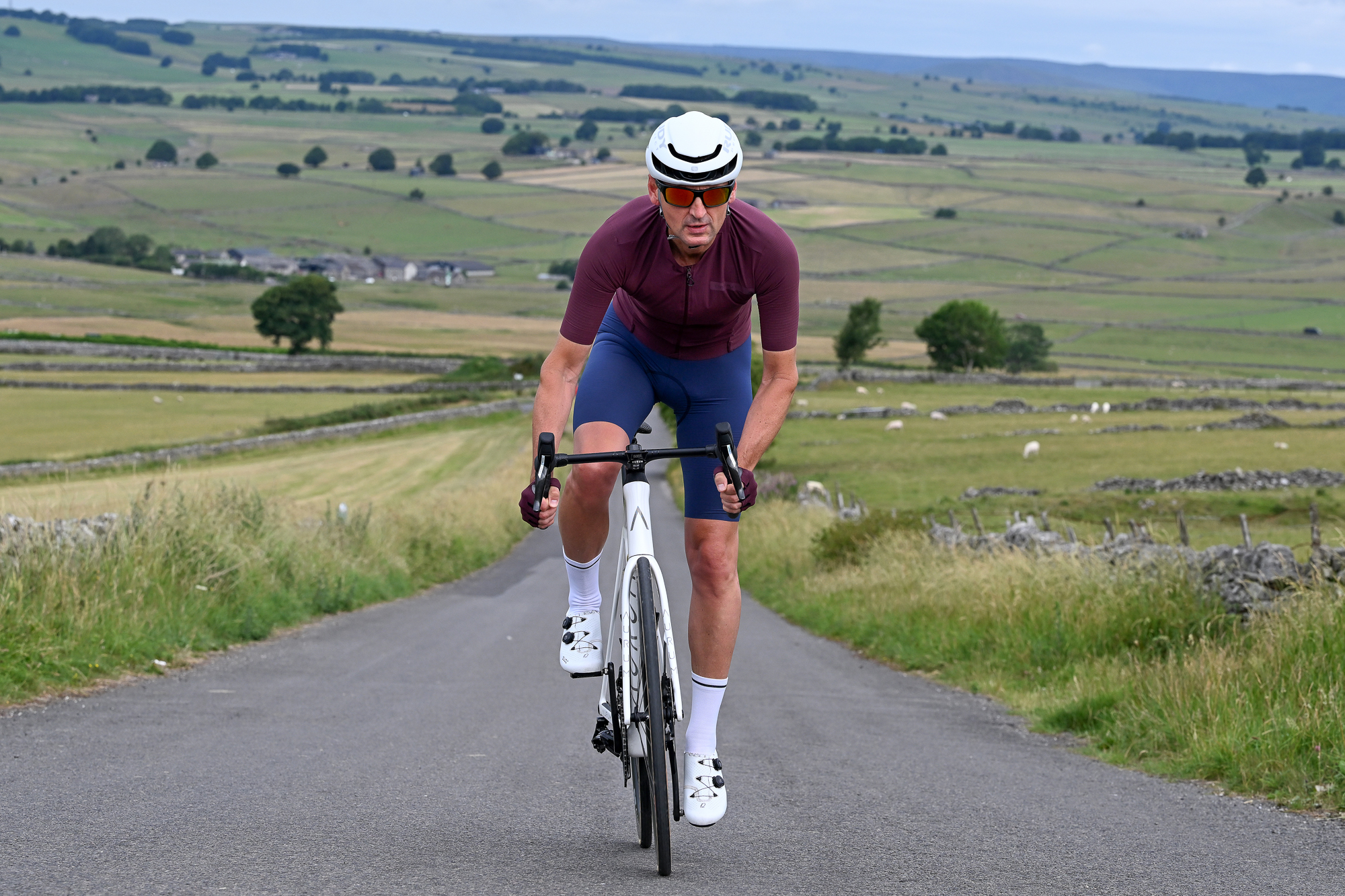
Out of the saddle climbing felt great thanks to the stiff frame
(Image credit: Andy Jones)
Less ideal, at least on the poor road surfaces I seem to spend most of my time on, was the ride quality, which was on the direct side. Balancing stiffness for power transfer with compliance for comfort is tricky at the best of times, and a judgement that all manufacturers have to make with each model, depending on the bike’s intended usage. Clearly, the Magma is competing at the highest level and being ridden by pro cyclists, so understandably, controlling their prodigious power output and making the bike as fast as possible takes priority – fair enough.
My power output is definitely not prodigious, and I don’t have the luxury of freshly-surfaced Grand Tour roads at my disposal, either, so a degree of comfort is important to me. My first port of call was the tyres – a lot of my recent riding has been on tubeless rubber larger than the 27.5mm Corsa Pro WRs – but even with the pressures dropped significantly, the underlying stiffness was still apparent. The second question concerned the wheels – although DT Swiss categorises the ERC 1400s as ‘Endurance,’ at only 22mm wide internally, they are lagging behind many of their competitors. Internal width adds extra air volume to the tyres, which in turn adds comfort, compliance and grip.
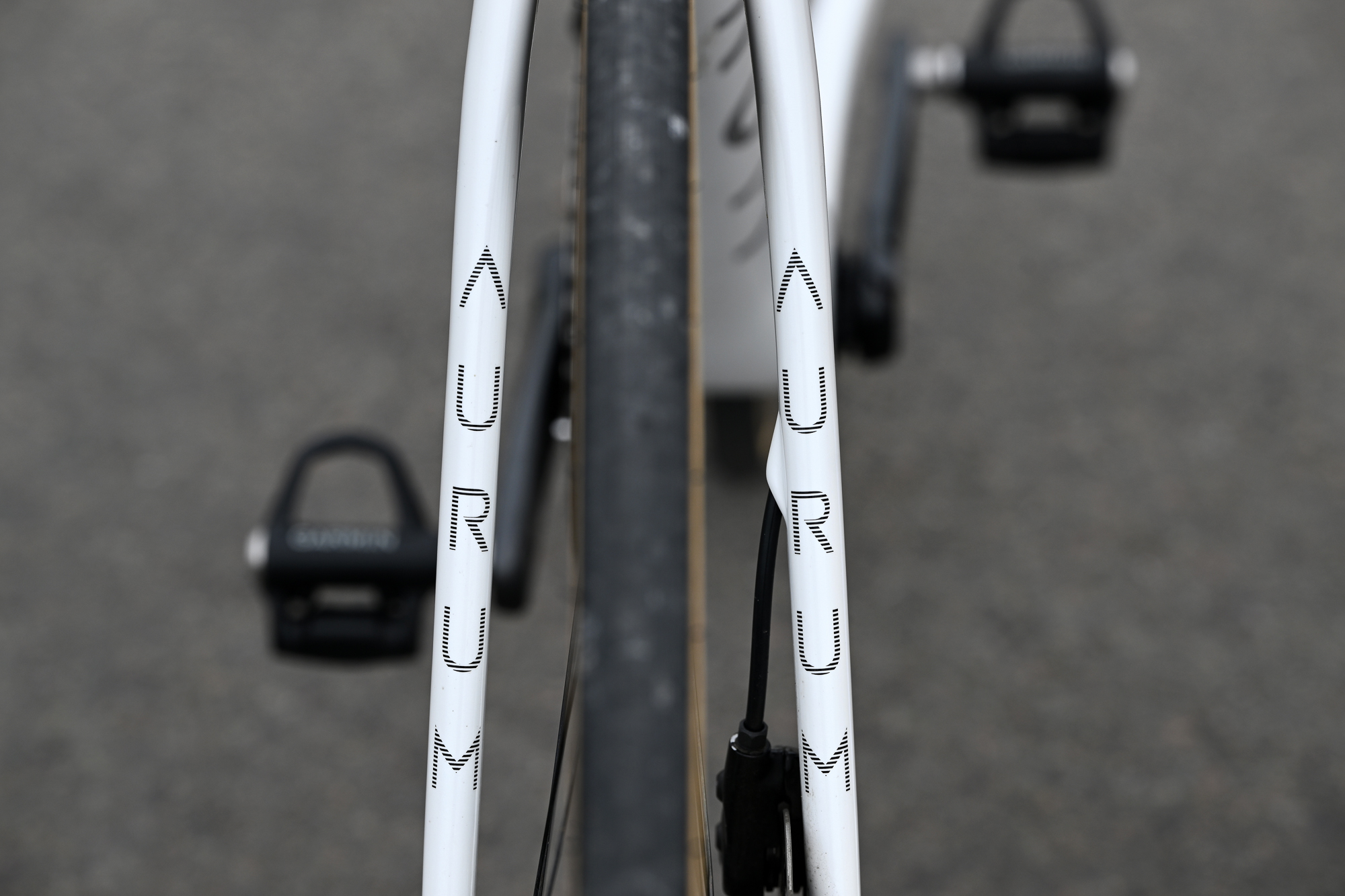
35mm worth of tyre clearance
(Image credit: Andy Jones)
I would have really liked to take advantage of the bike’s 35mm clearances and try the Magma on some wider tyres and rims, especially set up tubeless or with TPU tubes, but I didn’t get the opportunity. With more pneumatic compliance, I think that the Magma may well have shone brighter and with a wider operating window. As tested, it was undoubtedly fast, but wouldn’t have been my first choice for a long sportive.
Aurum says that the rear triangle has vibration-damping built in and that the flattened top tube adds some shock-absorption too, but I fear many UK roads are a bit beyond that.
Handling was fast but never nervous or intimidating, although again, I do think that it would have benefited from greater tyre volume to soak up any mid-bend cracks or surface changes and to reduce surface chatter. I would also have liked to have been able to get a little bit lower and further forward when descending, but a spec change at the point of purchase would soon sort that out.
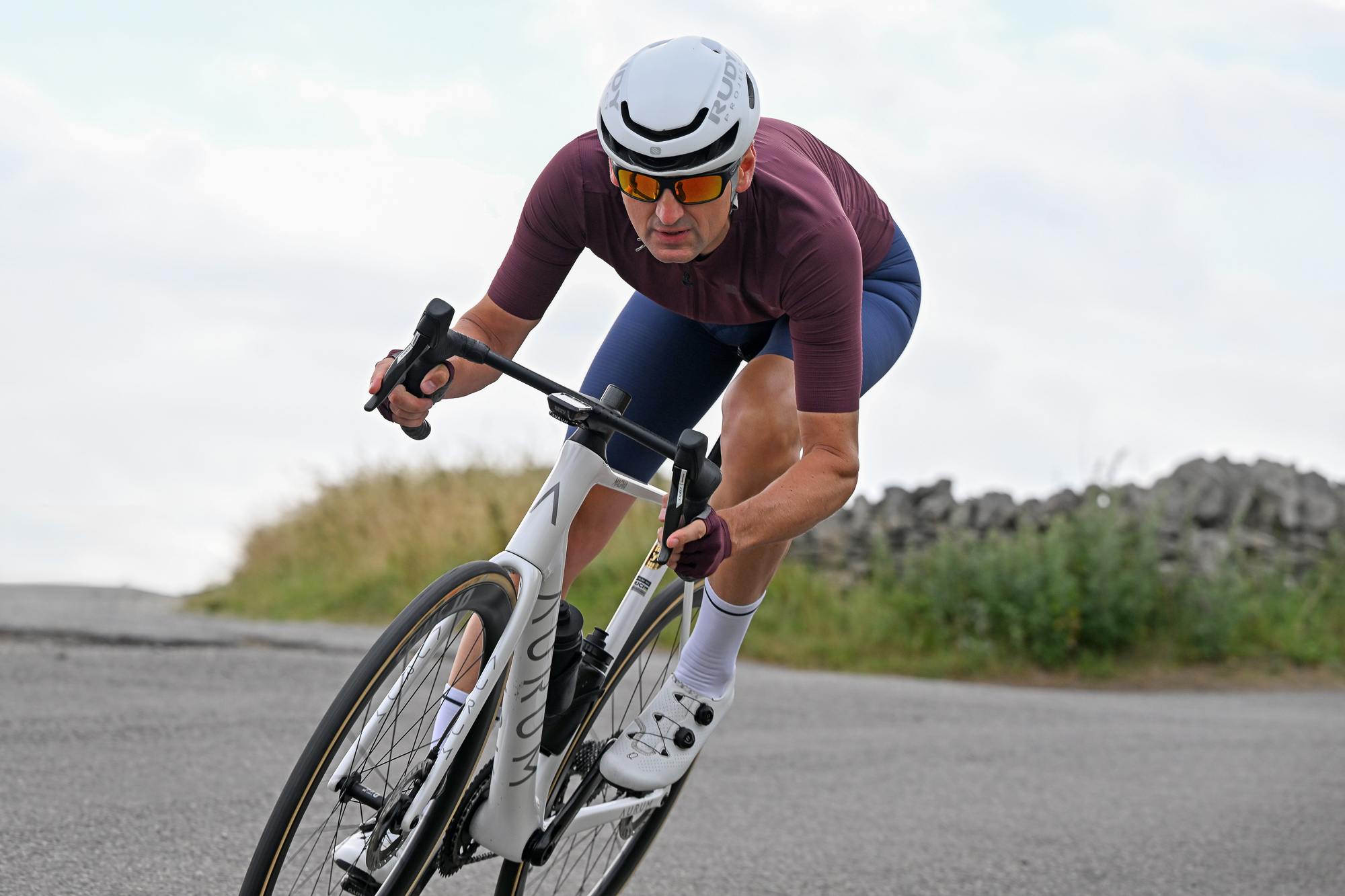
The Magma felt fast whether going up or down
(Image credit: Andy Jones)
Value and conclusion
The Aurum Magma is a nicely made bike with a clear purpose – to go fast. In the guise it was tested, I don’t think that it suited my local roads (and by extrapolation, a lot of UK riding) quite as well as some other bikes I have ridden, but this isn’t Aurum’s fault. Indeed, they make the equally classy-looking Essentia to fill this niche.
The Magma is Aurum’s race bike, and so should be judged as such. In this regard, it is hard to fault, with my only real niggle being the headset dust cover height, which increases the head tube length to endurance proportions but should be an easy fix.
The frame is beautifully finished, stiff enough for pro riders and looks lovely. The components can all be selected individually for a customised fit, and the £8,000 asking price for the test bike specification seems in line with other brands – a Specialized Tarmac SL8 with SRAM Force is £8,250, for example. Thus value is reasonable but not exceptional.
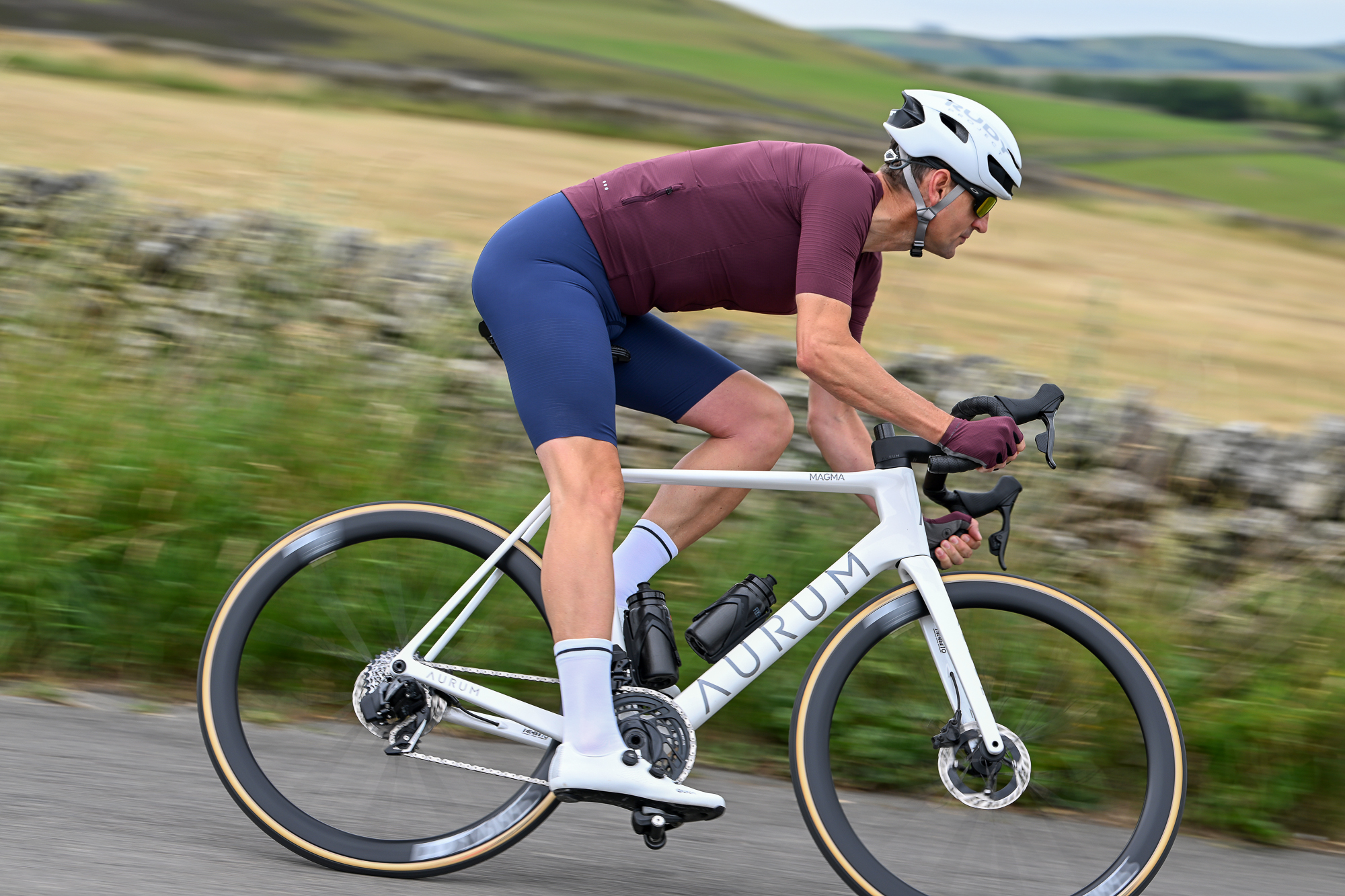
Spec it correctly and the Magma will make a very rapid bike
(Image credit: Andy Jones)
Spec wisely and the Aurum Magma will be a superb, fast road bike with more stiffness than most amateurs will need and pace aplenty, but get some wide rubber on there for UK use.
My 4.5 star rating is based on its performance as a thoroughbred race bike and on the fact that I believe my minor concerns can be easily countered with different specification choices.
